The Wetsuit, Through My Lens
Looking for a new wetsuit? Let’s talk about them, regardless of the answer. Let’s talk about more than just features and cost. It’s the critical piece of equipment in the leg of triathlon. How do you choose and use a wetsuit to increase your safety, comfort and speed?
Let’s expand this out a little, and talk in the context of the entire swim leg. Which is not like the other legs in a triathlon! What’s different about the swim? A lot!
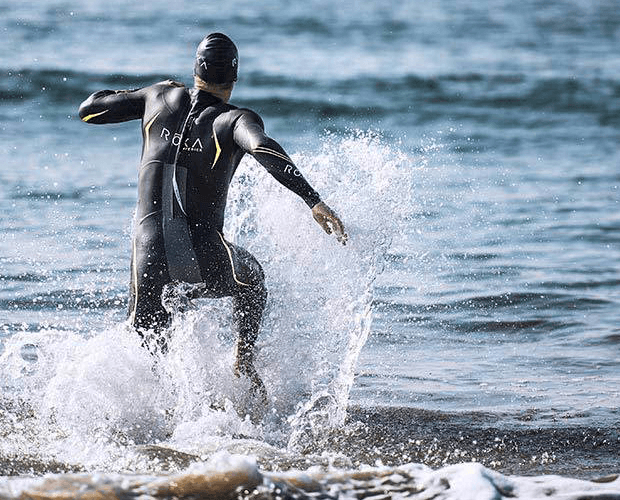
It’s the only leg of the three where speed and aerobic fitness are not so closely linked. If you want to go faster on the bike, or the run, improvements in technique will pay some dividends, but mostly you need change the nature of the engine or the chassis. You can get lighter, which helps until you can get no lighter. Otherwise, you need to produce more power, burn more gas, build a bigger fire inside your body.
In the swim it is, if anything, the opposite. Fast swimmers may not be swimming any harder than slow swimmers. In fact, because they finish minutes before you, their work is done while you’re still burning matches out there. Yes, there’s less advantage to be gained in the swim than in the bike or run (because the swim is shorter by duration), but the advantage you do gain comes without metabolic cost.
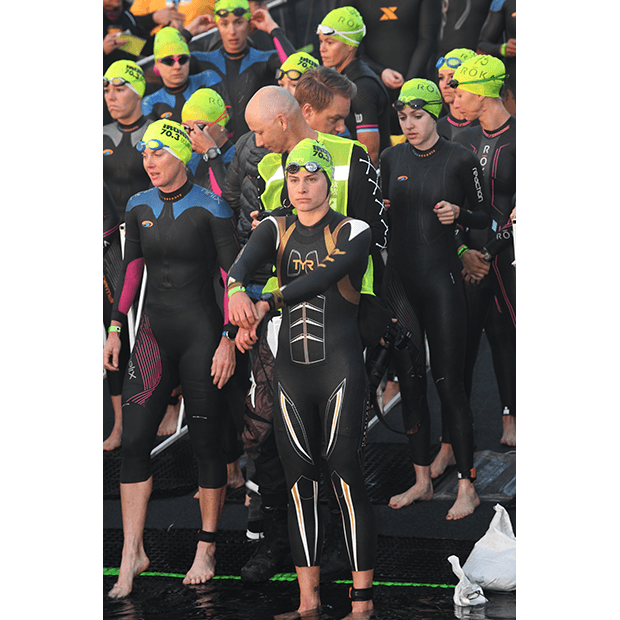
Second, the swim is the leg in which tactics and positioning yield the biggest dividends. Where you line up at the start; the line you take; whether you are able to draft swimmers in front of you; how you pace your effort; and how you negotiate the surf in a surf swim; might mean a minute or two gained or lost per every 10 minutes of racing time. Nothing you do in the bike or run – unless you blatantly draft, or cut the course, or take a wrong turn – affects you like that.
Wetsuits Can Make Your Swim Safer. Or Not.
Third, there is more peril associated with the swim than with the bike or run. Few people die in the run in triathlon. Mind, footrunning is perilous. But not footrunning in triathlon. Almost no one ever dies in the run in a triathlon. Why? One reason more people die in the swim is because it’s first.
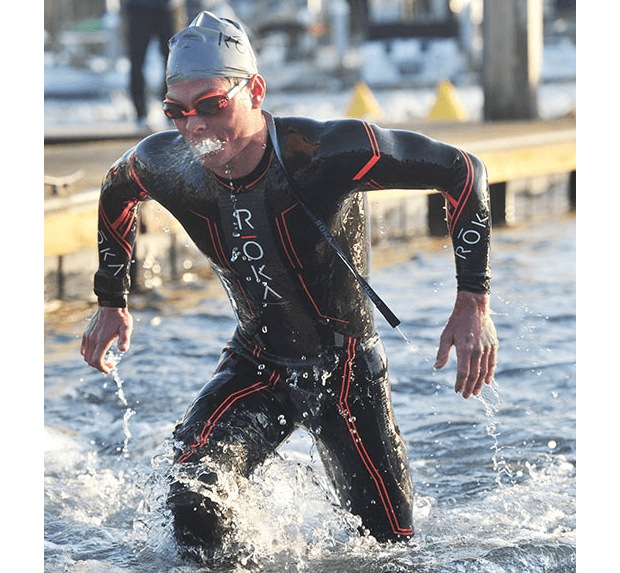
Triathlon has higher mortality rates than running, and while some of that is due to the bike, most if it is the swim. How does the wetsuit impact safety? Your wetsuit – how you choose it; how you use it – can make your swim safer. But if you choose poorly, you may lose that safety advantage.
Sales Channels
It’s a little tougher for you all now than it was when wetsuits first made their appearance in triathlon. That was 32 years ago, and back then you had a robust network of Independent Bike Dealers, many of whom stocked wetsuits. Fewer retailers have wetsuits in stock now. The wetsuit sales channel has shifted almost entirely to mail order.
May I say, as an aside, that here’s a place where your local club could provide a service, and few do this. Unless your LBS has a day or week every year set aside for this, your club could bring in a lot of wetsuits, just for sizing and try-on, either early in the season or proximate to the season’s big race(s).
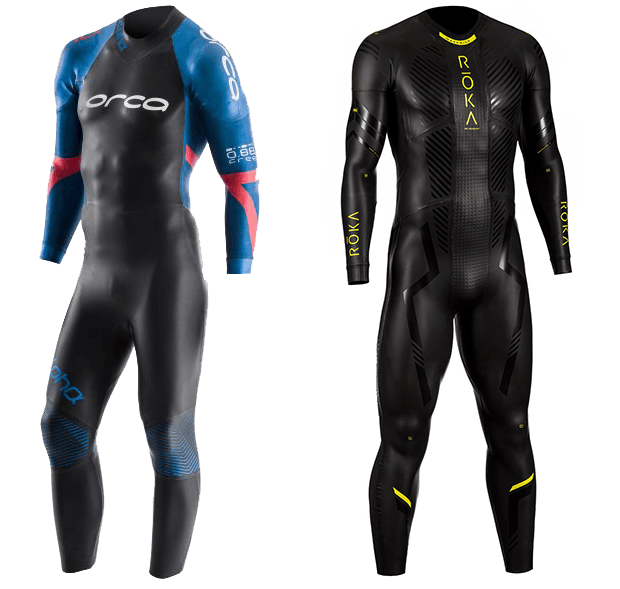
There’s the way things oughta be and the way things are, and mail order – with you on your own – is the way things are for most of you. So let’s deal with the way things are.
Loose or Tight
When I was a young buck, I wanted my wetsuits as tight as I could get them. If I could exit the swim with very little water having gotten into my wetsuit – basically, I was almost in a dry suit – that was the gold standard. But I’m 62 now and I’m writing about a time when I was half the age I am now. My diaphragm, and my ventilation capacity overall, just can’t overcome the pressure of a tight wetsuit. I now need my wetsuit to be loose in the chest. The neck? That’s mostly a function of how you put the suit on, which we’ll cover another day. There’s no way to put a wetsuit on that makes the suit more or less constrictive in the chest.
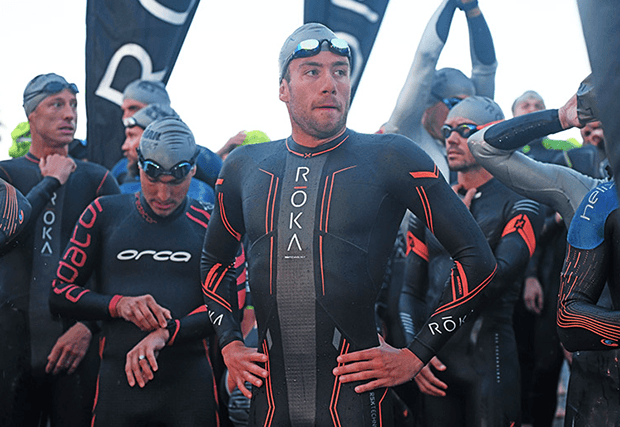
Some problems that occur in the water – both safety and performance-based – may be due to wetsuits too tight in the chest. I don’t have any facts for you. I only have experience and instinct. There are two reasons your wetsuits are too tight: you buy them too tight; or you buy the right wetsuit for the person you were then, not the person you are now.
Wetsuit Sizing Charts
Maybe it’s my imagination, but I’m noticing that some sizing charts nowadays are fitting people in tighter wetsuits than they might best use. Maybe I think this because I’m older now. I bring to the size chart problem a different morphology. If I’m able to reach my current goal of 6’2” and 165lb, it’s a very different 165lb than fit into my wetsuit 30 years ago. I was trimmer then, my circumferences (waist and thighs) were smaller, and my chest was better able to overcome the sausage skin that a wetsuit can seem like.
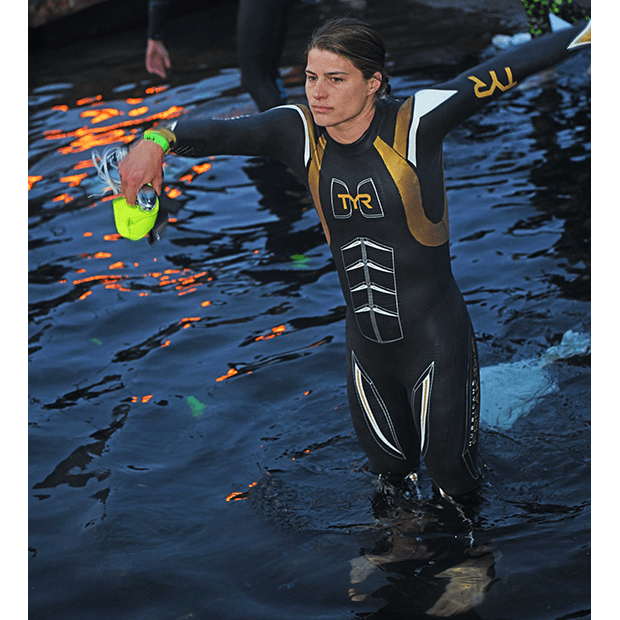
A wetsuit size chart is nothing but a guess. I remember back when I was playing around in exercise physiology, which is what I thought I’d do for a living before falling into a different part of the industry. I built up a large dataset of people who I hydrostatically weighed, to calculate percentage of body fat. I distinctly remember one session that included two women, each 5’7” and 130lb, one who was 30 percent body fat, the other 7 percent. The latter was a severe outlier (of several thousand people tested, she was the only woman ever under 10 percent). Thing is, these women were identical per the size chart, but would fit in very different wetsuits.
You can’t simply rely on a size chart. The older you get, the more you need to size up – to err on the larger size. The longer you’ve had your wetsuit, the less likely it’ll still fit the way it needs to. If you get your mail order wetsuit and you suspect it's too tight, send it back and get the right size. Don't swim in your old wetsuit just because it still has life in it. Get the right size. Don’t fool around with this. I don't want to hear you post concerns on our Forum about swim deaths only to then see you shoehorn your recently acquired extra layer into your 5 year old wetsuit.
When a Wetsuit Needs to Work
All wetsuits work great for the first quarter mile. Because swimmers usually start at a pace not sustainable; because our diaphragm gets tired after the initial few minutes of the swim; because of the combination of a tired diaphragm, a start that’s too quick, metered breathing, the pressure of a wetsuit, and the need to keep swimming at a prescribed pace; sometimes you get a little chest tightening you might not recognize. You don’t recognize it because you don't get it in pool sessions, and you didn’t get it in the easy open water sessions when you're testing your new wetsuit. These days I can pretty much rely on that happening to me in a race with a wetsuit. It lasts a couple of minutes.
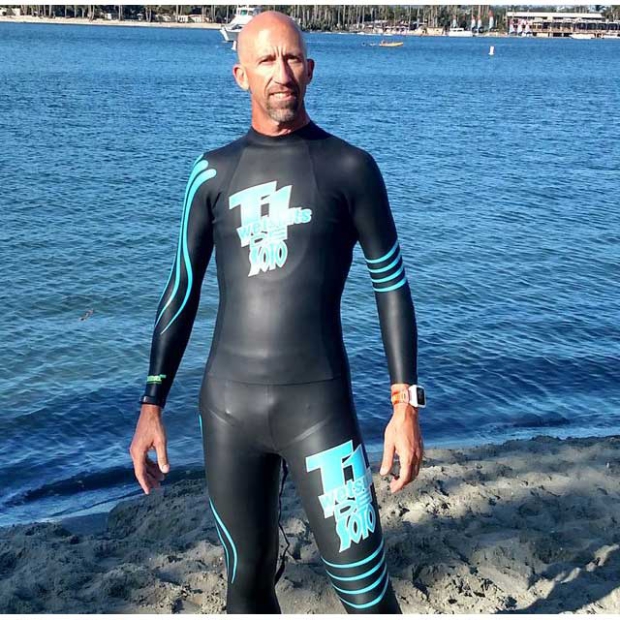
For some people, this is the "panic attack." For me, it's just the invariable, "dang!" Then I settle into a stasis, that tightness goes away, and I’m good for the rest of the swim.
How does this affect your choice of wetsuit? It needs to be roomy and flexible enough to work in the most trying of circumstances, but not so roomy it picks up half the ocean and you’re swimming in galoshes before the swim’s halfway point. This is what makes wetsuit making a little more of an art than it gets credit for.
Wetsuit Types
I divide wetsuits into two types, and it’s not the two you think I mean. It’s not fullsuit versus longjohn, which is one way of saying long sleeve versus no sleeve. The only wetsuit you should consider is a long sleeve suit. (I'm going to get a lot of comments to this article from the experts, on a number of statements with which the experts will take issue, my insistence on fullsuits chief among them.)
The two wetsuit styles I’m talking about are 2 piece versus 1 piece. The 2 piece wetsuit consists of a “bibjohn” and a “pullover”.
I’ve got both styles, I swim in both styles, and have logged many miles in both styles. They’re both great. And to be clear, there is one maker of the 2 piece style – De Soto – and every other wetsuit maker makes a 1 piece wetsuit. Let’s talk about the value of each.
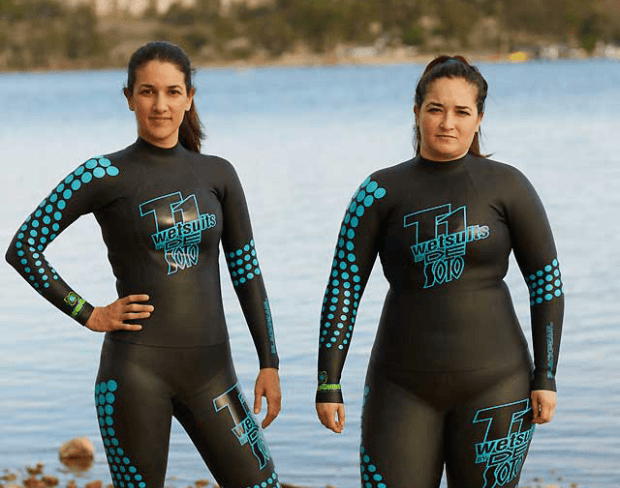
A 1 piece wetsuit is easier to keep track of, because it’s just 1 piece. It might be a little quicker in transition. The right 1 piece, for the right swimmer, may be a little faster.
What I note from my 2 piece is that it’s easier to get on, easier to pull up and into place, is less likely to pull down in the shoulders causing shoulder restriction. I also think it’s got a more comfortable neck than 1 piece wetsuits. I like the 2 piece wetsuit for those with weak or compromised shoulders; who have morphologies that defy the patterns by which 1 piece wetsuits are made; and who need to mix and match bibjohn and pullover sizes.
The 2 piece sounds pretty desirable, doesn’t it? So, here’s the magic question. If the 2 piece wetsuit has compelling advantages, why don’t you see them more often; and why don’t other companies make them? I don’t know. That suit style debuted in 2002 and it’s a mystery to me why it’s remained in scant use. It’s like the beam bike: It was here in the mid-90s; then it almost disappeared. Maybe the beam bike’s return, with the Dimond, the Diamondback (Andean) and the Cervelo (P3X) means you can’t keep a good style down, and the 2 piece wetsuit’s value will be recognized in proper proportion.
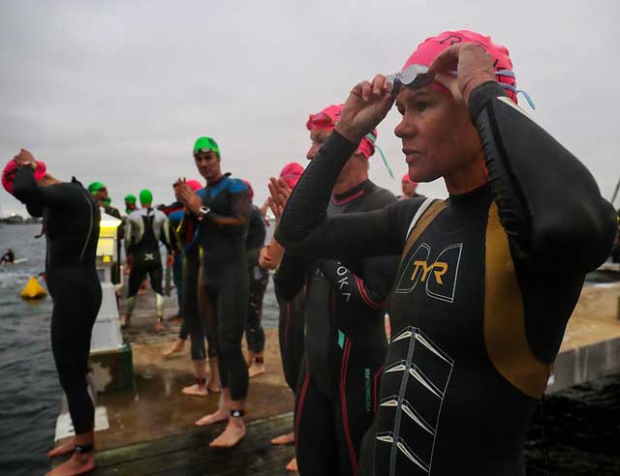
I think that’s enough for today. Over the next couple of weeks I’m going to write about wetsuit brands individually, which wetsuits I like, about the proper use of wetsuits, and how to use them tactically in a broader discussion of the swim leg.
If I Could Have My Way
If I could have my way what behavior would everyone adopt about wetsuits? Primarily, that you don’t try on a wetsuit for the first time, or the first time in a year, just before the race. Your club, or your local shop, could organize a day when you all could try on various models and sizes of wetsuits, so that you could know that the suit you’re going to swim in is comfortable.
Other behaviors I hope you’ll consider I’ll express in the installments upcoming, where we talk about particular wetsuits, and then generally how to put them on, swim in them, swim tactics you might employ and so forth.


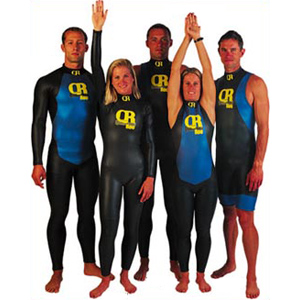
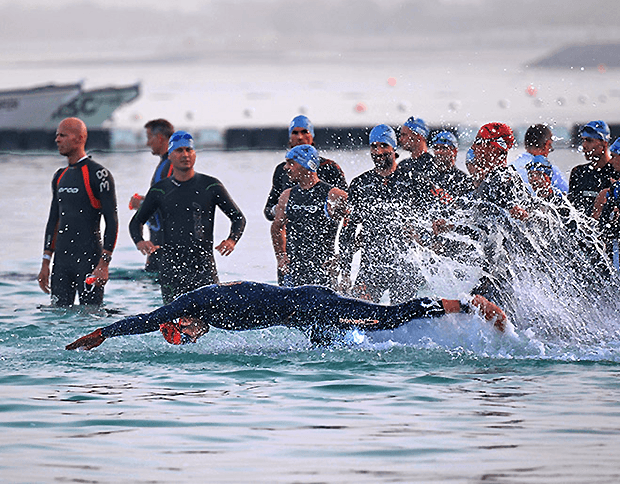
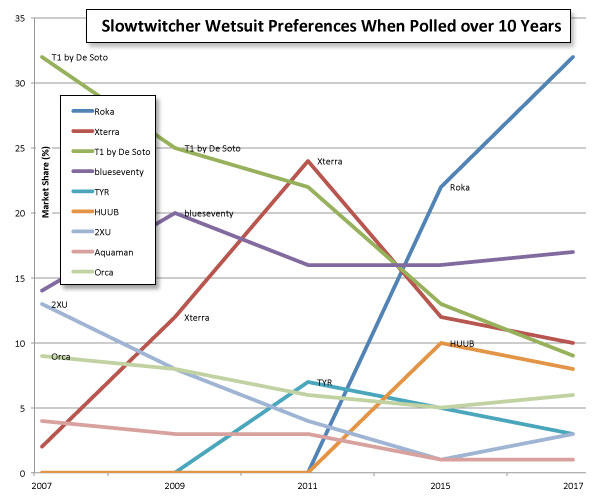
Start the discussion at slowtwitch.northend.network